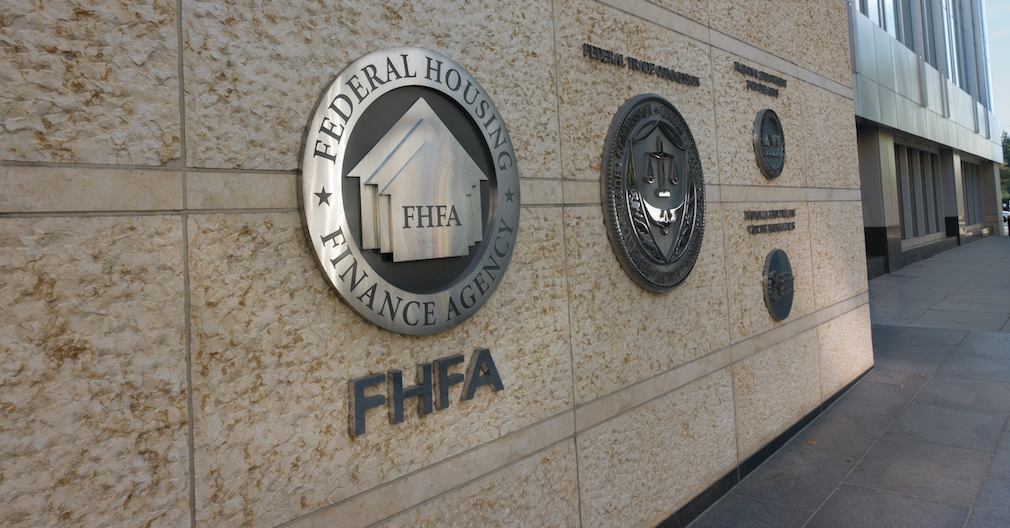An updated report from the Federal Housing Finance Agency Office of Inspector General thrust Fannie Mae’s new headquarters back into spotlight, further fueling those in Congress who say the building costs are excessive and expensive to taxpayers.
The government-sponsored enterprise’s new headquarters have been under fire ever since the FHFA OIG received an anonymous hotline complaint in 2016 that accused Fannie Mae of excessive spending on its consolidation and relocation of offices.
While FHFA Director Mel Watt has adamantly defended the headquarters in the past, Rep. Bill Huizenga, R-Mich., recently grilled Watt during a hearing, pushing him on the necessity behind the growing costs for the new office location.
[See the glitzy architect renderings here.]
According to an article in The Washington Free Beacon by Elizabeth Harrington, Huizenga, who also co-owns a gravel company and worked in real estate and development in the private sector, said during the hearing, “Good news. I discovered what a wooden lunch hut is. Keep the wooden lunch hut, cancel the damn spiral staircase. You are making K Street law firms and lobby shops jealous. They want to move to 15th and L. They want to move off K Street if this your headquarters.”
This new report from the FHFA OIG questioned if Watt was properly doing his job in determining whether the efficiencies of the upgrades specified by Fannie Mae justified their estimated costs, especially for a entity in a federal conservatorship with an uncertain future.
“In our view, that standard was consistent with FHFA’s statutory duties, as conservator, to ‘preserve and conserve the assets and property’ of Fannie Mae,” the report stated.
One of the core issues with Fannie Mae’s new building deals with the drastic uptick in costs. According to the FHFA OIG, the project’s build-out costs had risen dramatically from $115 million, when the agency approved the project in January 2015, to $171 million in March 2016.
Plans for the building include high-end features, such as multimillion-dollar glass walkways between the towers Fannie Mae would occupy.
While Fannie Mae does operate in the housing finance world and competes with private companies for talent, the report argued that this was not enough to justify the rising costs of the renovation.
“Unlike major financial institutions or large government agencies, Fannie Mae has been in conservatorship since 2008 and has an uncertain future and FHFA, as conservator, has an affirmative duty to ‘preserve and conserve’ Fannie Mae’s assets and property,” the report stated. “While Fannie Mae may perceive that all of its specified upgrades ‘above and beyond’ $175 per rentable square foot could promote employee recruitment and retention, FHFA has not determined that expenditure of Fannie Mae’s assets for those upgrades is necessary.”
And due to this, the FHFA OIG questioned the basis for all upgrades, finishes, and architectural design elements.
Watt, however, once again defended the renovations and his role as conservator of the GSEs.
In a response letter to the report, Watt said, “I fundamentally disagree with the interpretation in this Update of FHFA’s statutory responsibilities as conservator, and I especially disagree with your view of the standards I am required to apply in fulfilling my obligations to ‘preserve and conserve’ conservatorship assets.”
“Under the Housing and Economic Recovery Act of 2008, my responsibilities as conservator include both the obligation ‘to carry on the business of the [Enterprises]’ and the obligation to ‘preserve and conserve the assets and property of the [Enterprises].’ FHFA is required to balance these statutory responsibilities throughout our work as conservator of Fannie Mae and Freddie Mac and there is substantial legal authority supporting FHFA’s right to use its own judgment to make decisions about that balance.”
Watt outlined the following four reasons for why the new headquarters will result in a more effective and efficient organization that will benefit taxpayers.
- It will significantly reduce the costs of operating Fannie Mae relative to its current multi-building D.C. footprint by hundreds of millions of dollars.
- It will decrease the square footage of Fannie Mae’s headquarters and result in more efficient use of space.
- It will allow management to implement a new way of working with significantly fewer individual offices and more common, shared space that enables Fannie Mae employees to work in a more collaborative and efficient environment.
- In light of the uncertain future of Fannie Mae under housing finance reform and the uncertain timing of reform, it will allow Fannie Mae to conduct its business efficiently and effectively while it operates in conservatorship and will maximize the opportunity to sublease the space to a new tenant in the future if that becomes necessary.





